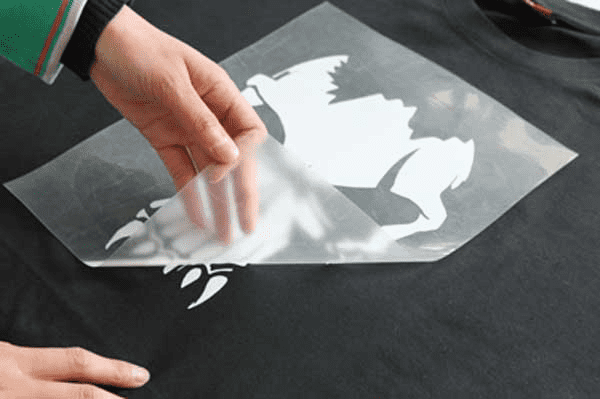The heat transfer process is a process of transferring the decorative patterns on the surface of the decorative material onto the surface of the decorative building by heating the heat transfer film at once. In the process of heat transfer printing, the combined action of heat and pressure is used to separate the protective layer and pattern layer from the bottom film, and the hot-melt adhesive makes the whole decorative layer permanently bonded with the substrate.
There are many kinds of clothing heat transfer, and there are two common heat transfer methods: sublimation heat transfer and heat transfer hot stamping
1. Sublimation heat transfer:
Disperse dye (or sublimation ink) is printed (or printed) on specific paper by machine in advance, and then through this paper, the pattern on the paper is transferred to the cloth to be printed with high temperature and high pressure to complete the whole heat transfer printing process. According to the market demand of transfer printing, the most used printing methods are as follows:
(1) The advantages of gravure printing machine for printing disperse dyes are: low cost of printing paper, exquisite pattern expression, strong sense of hierarchy and full pattern. Suitable for mass transfer printing production. The disadvantages are: high plate making cost and insufficient competitiveness for small batch personalized products.
(2) The ink is sublimated on the offset printing machine, and then transferred to the offset printing machine. Advantages: because it uses PS plate printing, the plate fee is low, and the plate fee cost is also low. It is suitable for printing of small batch products. Disadvantages: the color depth after printing is difficult to be well controlled. If you want to do clothing heat transfer printing, you have to think about it. Because any clothes are made of at least two pieces of cloth. Imagine: how can you sell this clothes when the color difference between the front and back pieces of clothes is large? How?
(3) Advantages of digital thermal transfer printing: the pattern expression is more delicate than any transfer printing, with a strong sense of hierarchy and extremely full pattern. Moreover, due to plate free printing, it completely eliminates the disadvantages of inaccurate color registration or plate blocking caused by other printing methods. Disadvantages: Although there is no version fee, the cost of printing ink and paper is high. So far, it is only suitable for transfer printing of small batch personalized products.
(4) Sublimation ink for silk screen printing. This transfer printing method has low plate making cost and sublimation ink is not expensive. However, due to the screen version used for printing, the pattern edge transaction produces burrs, which is not suitable for fine pattern printing such as figures and landscapes.
2. Heat transfer hot stamping
Different from the sublimation heat transfer printing method, the printing material will not produce sublimation (vaporization) like sublimation dye. The printing material will not print high temperature and high pressure, resulting in the slurry penetrating into the cloth fiber. Although it can also be pressed and ironed by the transfer machine, what is “printed” on the clothing surface is attached to the clothing surface like a layer of “Plaster”.
Its main feature is that most of the substrates used are pet sheets. After printing patterns of various colors on the pet sheets, it is necessary to apply hot-melt adhesive on the back of the patterns. It is this hot-melt adhesive that firmly combines the patterns with clothes, removes the waste PET film and completes the heat transfer process.
Advantages of heat transfer hot stamping: low plate making cost, full pattern level and beautiful color. Disadvantages: after being transferred to clothing, the air permeability is poor, and the hand feel is not as soft as sublimation heat transfer.


